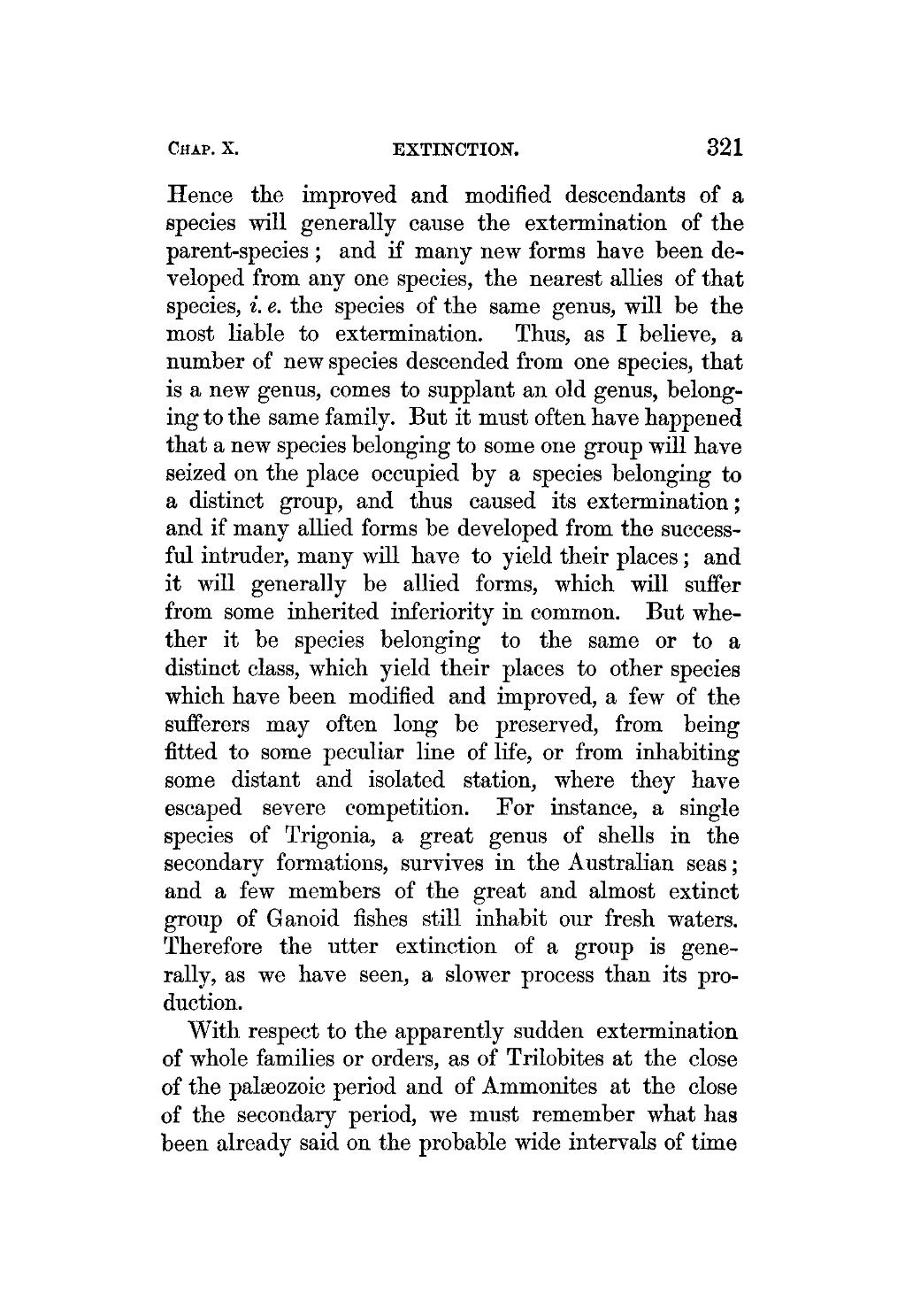Hence the improved and modified descendants of a species will generally cause the extermination of the parent-species; and if many new forms have been developed from any one species, the nearest allies of that species, i.e. the species of the same genus, will be the most liable to extermination. Thus, as I believe, a number of new species descended from one species, that is a new genus, comes to supplant an old genus, belonging to the same family. But it must often have happened that a new species belonging to some one group will have seized on the place occupied by a species belonging to a distinct group, and thus caused its extermination; and if many allied forms be developed from the successful intruder, many will have to yield their places; and it will generally be allied forms, which will suffer from some inherited inferiority in common. But whether it be species belonging to the same or to a distinct class, which yield their places to other species which have been modified and improved, a few of the sufferers may often long be preserved, from being fitted to some peculiar line of life, or from inhabiting some distant and isolated station, where they have escaped severe competition. For instance, a single species of Trigonia, a great genus of shells in the secondary formations, survives in the Australian seas; and a few members of the great and almost extinct group of Ganoid fishes still inhabit our fresh waters. Therefore the utter extinction of a group is generally, as we have seen, a slower process than its production.
With respect to the apparently sudden extermination of whole families or orders, as of Trilobites at the close of the palæozoic period and of Ammonites at the close of the secondary period, we must remember what has been already said on the probable wide intervals of time
